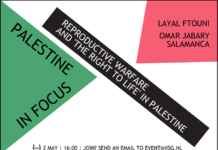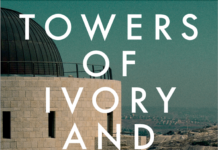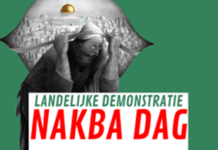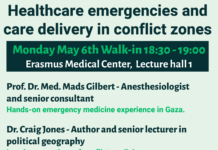Forensic Architecture
The Guardian / August 20, 2021
Our battle to restore a statement to a Manchester exhibition was really about what can and can’t be said in cultural spaces.
On Wednesday, protesters in Manchester reclaimed one of the city’s main cultural institutions. Despite the rain, pro-Palestine activists gathered in front of the closed doors of the Whitworth gallery, part of the University of Manchester. It was because of their persistent action, and 13,000 letters sent to the gallery, that part of our exhibition, a printed statement titled “Forensic Architecture stands with Palestine”, has been reinstated. The exhibition, which we insisted be shut as a result of the statement’s unilateral removal, has now reopened.
On Sunday 15 August, a blog post on the website of UK Lawyers for Israel (UKLFI) announced that, following the group’s intervention, the statement had been removed from our exhibition, Cloud Studies. When we first heard of the news, we were not altogether surprised. The same group had already criticised a statement of solidarity with Palestinians published on the Whitworth’s website in June, and succeeded in convincing the university to have it removed. And this was hardly UKLFI’s first attack on us as an organisation. In 2018, when we were nominated for the Turner prize, UKLFI urged the Tate not to award the prize to us on the outrageous grounds that documents that we had published in relation to Palestine amounted to “modern blood libels likely to promote antisemitism and attacks on Jews”.
Forensic Architecture is not exactly an art collective, as some people refer to us. Rather, we are a university research group that works with communities at the forefront of conflict all over the world. We develop architectural tools and techniques to gather evidence of human rights violations for use in national and international courtrooms, parliamentary inquiries, citizen tribunals, community forums, academic institutions and the media. We also present our findings in galleries and museums when other sites of accountability are inaccessible.
Thus, though surprised by the Turner prize nomination, we chose to use the platform to unravel official Israeli statements about the 18 January 2017 killing of Bedouin Palestinian Yaakub Abu al-Qi’an by Israeli police officers. We collaborated with residents of the Palestinian village of Umm al-Hiran and activists to produce an investigation, which collectively challenged the claims of Israeli officials that al-Qi’an was a “terrorist” and instead revealed a cruel act of killing and a crude cover-up. The investigation’s conclusions were hard to contest – even Israel’s hard-right then prime minister Benjamin Netanyahu was eventually forced to apologise for the killing.
Our work is indicative of the advent of a new kind of political art: one that is less interested in commenting on than intervening in political realities. It is in this spirit that we exhibited Cloud Studies at the Whitworth. The title refers to the advent of meteorology in the 19th century in the combined work of scientists and artists, but rather than looking at the weather, the exhibition maps today’s toxic clouds: from teargas in the US, Palestine, and Chile, through to chemical strikes in Syria, to those produced by extractive industries in Argentina, to the CO2 clouds created by forest fires in Indonesia.
A key part of the exhibition is our study of environmental racism in Louisiana – specifically, a heavily industrialised “petrochemical corridor” along the Mississippi river between Baton Rouge and New Orleans. Residents of the majority-Black communities that border those facilities breathe some of the most toxic air in the country, and suffer some of the highest rates of cancer.
In May, as we worked on the exhibition, the latest round of Israeli attacks on Gaza began. We followed closely as collaborators, friends and former staff in Gaza and elsewhere in Palestine sent us horrific images in real time of the destruction Israeli forces were wreaking on their homes and businesses. When we witnessed clouds of toxic fumes rising over the bombed-out chemical facilities in Beit Lahia, it felt like a live rendition of our Cloud Studies.
Attacks extended also to art institutions: our close friend the Palestinian artist Emily Jacir sent us videos of Israeli forces raiding Dar Jacir, a vital independent artist-run space in Bethlehem.
Our statement, whose inclusion in the exhibition had been approved during its planning stages by the Whitworth’s curators, was written as these attacks were happening. We used terms such as “ethnic cleansing” and “apartheid” to describe the policies of the Israeli government in Palestine, because such characterisations describe the reality of Palestinian life and are in keeping with the language of major Israeli and international human rights organisations, and have of course been used by Palestinians for decades. The term “settler colonialism”, similarly, has been used extensively by scholars to describe Israeli policies in Palestine. If such terms are offensive, they are most offensive to those experiencing the everyday impact of such policies.
Universities need to be places where such categories can be presented, developed and debated, and our battle to reinstate the statement was really about what could be said within an academic and cultural environment.
Pandering to groups such as UKLFI – an organisation that hosted a public event featuring the far-right Israeli settler organisation Regavim, which supports the demolition of Palestinian homes – is not only a violation of the principle of the freedom of expression, but also shows a lack of moral integrity. Our case is only one and not a particularly major example, of the smear campaign and legal attacks on Palestinian artists and intellectuals, many of whom face repression at the hands of Israeli occupation authorities, and censorship and restrictions on their freedom of expression internationally. For us, the campaign by UKLFI to discredit Forensic Architecture is part of such efforts to silence and intimidate. The fact that a concerted effort managed to reverse Manchester University’s position, shows that such action can and must be collectively resisted.
This battle at the Whitworth also has something to say to those in charge of cultural policy: as galleries increasingly look to host political art, institutions and publics alike should not be surprised when political art is, well, political.
Forensic Architecture is a research agency that investigates human rights violations including violence committed by states, police forces, militaries, and corporations.












